Themed collection Polymer Chemistry: 5 years on

Layer-by-layer preparation of polyelectrolyte multilayer membranes for separation
Polymer membranes prepared by layer-by-layer depostition provide a highly promising platform for the development of an efficient and sustainable technique for separation.

Polym. Chem., 2014,5, 1817-1831
https://doi.org/10.1039/C3PY01262J
Multi-stimuli responsive polymers – the all-in-one talents
The integration of several responsive moieties within one polymer yields smart polymers exhibiting a multifaceted responsive behaviour.
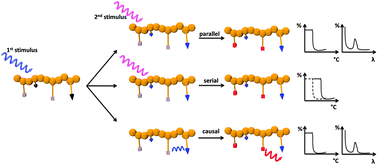
Polym. Chem., 2014,5, 25-36
https://doi.org/10.1039/C3PY00880K
Structure–properties relationship of fatty acid -based thermoplastics as synthetic polymer mimics
Fatty acids and their derivatives as resources for renewable speciality polymers.
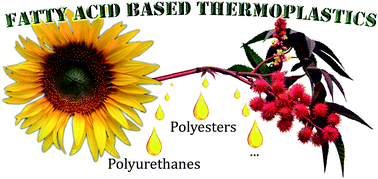
Polym. Chem., 2013,4, 5472-5517
https://doi.org/10.1039/C3PY00791J
Honeycomb structured polymer films via breath figures
This work presents a comprehensive review on the progress of the “breath figures” technique for structuring porous membranes. It focuses on the study of variables, materials, current and potential applications and characterization techniques.
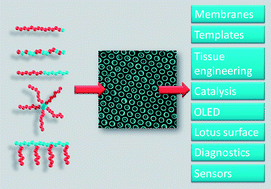
Polym. Chem., 2012,3, 563-577
https://doi.org/10.1039/C1PY00219H
Benzo[1,2-b:4,5-b′]dithiophene -based conjugated polymers : band gap and energy level control and their application in polymer solar cells
Band gaps and molecular energy level modulations of conjugated polymers containing benzo[1,2-b:4,5-b′]dithiophene (BDT) exhibit promising power conversion efficiencies for polymer solar cells.
![Graphical abstract: Benzo[1,2-b:4,5-b′]dithiophene-based conjugated polymers: band gap and energy level control and their application in polymer solar cells](/en/Image/Get?imageInfo.ImageType=GA&imageInfo.ImageIdentifier.ManuscriptID=C1PY00197C&imageInfo.ImageIdentifier.Year=2011)
Polym. Chem., 2011,2, 2453-2461
https://doi.org/10.1039/C1PY00197C
Single site catalysts for stereoselective ring-opening polymerization of lactides
In recent years a variety of metal-ligand complexes were explored for the ring-opening polymerization of lactides. Besides catalytic activity, the stereoselective behavior has received great interest.

Polym. Chem., 2011,2, 520-527
https://doi.org/10.1039/C0PY00204F
Clickable initiators, monomers and polymers in controlled radical polymerizations – a prospective combination in polymer science
Combining the concepts of click chemistry and controlled radical polymerizations (CRPs), “clickable” initiators and monomers for CRPs as well as the postmodification reactions of prefunctional polymers have been widely used to construct clickable macromolecules.
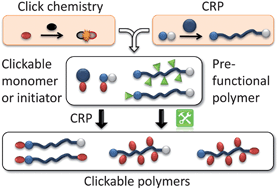
Polym. Chem., 2010,1, 1560-1598
https://doi.org/10.1039/C0PY00168F
Recent advances in the design of bioconjugates from controlled/living radical polymerization
A comprehensive review of the recent advances in the synthesis of well-defined bioconjugates from controlled/living radical polymerization, including proteins, peptides and oligonucleotides, is presented and outlines work up to early 2010.
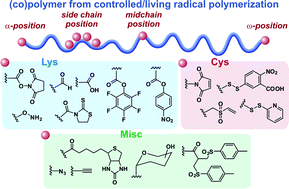
Polym. Chem., 2010,1, 563-598
https://doi.org/10.1039/B9PY00363K
Conjugated polymers for high-efficiency organic photovoltaics
In this review we summarize the most recent developments in conjugated polymers for high-efficiency organic photovoltaic devices. We focus on correlations of polymer chemical structures with properties, which may guide rational structural design and evaluation of photovoltaic materials.
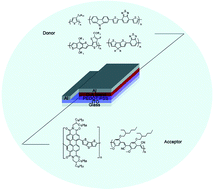
Polym. Chem., 2010,1, 409-419
https://doi.org/10.1039/B9PY00325H
Thiol-ene “click” reactions and recent applications in polymer and materials synthesis
This review highlights examples of recent applications of both the radical-mediated and base/nucleophile-initiated thiol-ene reactions in polymer and materials synthesis. Initial discussion focuses on mechanistic aspects of these reactions and also notes some of the structural considerations, with respect to reactants, that should be considered when practising such chemistries.

Polym. Chem., 2010,1, 17-36
https://doi.org/10.1039/B9PY00216B
Polymerization-Induced Self-Assembly (PISA) – control over the morphology of nanoparticles for drug delivery applications
Polymerization-Induced Self-Assembly (PISA) – control over the morphology of nanoparticles for drug delivery applications.
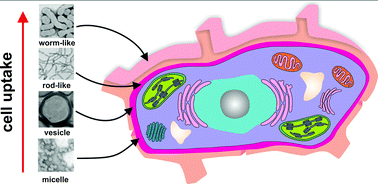
Polym. Chem., 2014,5, 350-355
https://doi.org/10.1039/C3PY01306E
Facile preparation and cell imaging applications of fluorescent organic nanoparticles that combine AIE dye and ring-opening polymerization
An aggregation induced emission dye (PhNH2) with two amino end groups was facilely incorporated into fluorescent organic nanoparticles (RO-OA FONs) through one-step room temperature anhydride ring-opening polymerization.
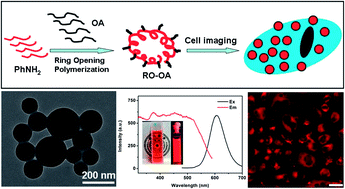
Polym. Chem., 2014,5, 318-322
https://doi.org/10.1039/C3PY01143G
Cross-linkable aggregation induced emission dye based red fluorescent organic nanoparticles and their cell imaging applications
A novel strategy was developed to fabricate red fluorescent organic nanoparticles (R-PEG FONs) based on a cross-linkable aggregation induced emission dye (R-E) and thus obtained FONs were subsequently utilized for cell imaging applications.

Polym. Chem., 2013,4, 5060-5064
https://doi.org/10.1039/C3PY00860F
The importance of ligand reactions in Cu(0)-mediated living radical polymerisation of acrylates
Ligand mediated termination events occur during the homo-polymerisation of methyl (MA) and butyl (BA) acrylate under SET-LRP (Cu(0) mediated) conditions.
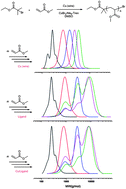
Polym. Chem., 2013,4, 2672-2675
https://doi.org/10.1039/C3PY00270E
Where is Cu(0) generated by disproportionation during SET-LRP?
The nucleation and growth of nascent Cu(0) nanoparticles formed by disproportionation during SET-LRP on the surface of Cu(0) wire was demonstrated by Scanning Electron Microscopy analysis of the Cu(0) wire surface.

Polym. Chem., 2013,4, 1328-1332
https://doi.org/10.1039/C3PY21133A
Water-soluble supramolecular hyperbranched polymers based on host-enhanced π–π interaction
Host-enhanced π–π interaction is employed as the driving force to construct supramolecular hyperbranched polymers.
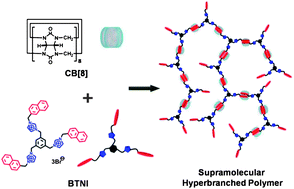
Polym. Chem., 2013,4, 900-903
https://doi.org/10.1039/C2PY21037A
An isoindigo and dithieno[3,2-b:2′,3′-d]silole copolymer for polymer solar cells
The conjugated copolymer of isoindigo and dithienosilole was synthesized and studied in bulk heterojunction solar cells with fullerene derivatives.
![Graphical abstract: An isoindigo and dithieno[3,2-b:2′,3′-d]silole copolymer for polymer solar cells](/en/Image/Get?imageInfo.ImageType=GA&imageInfo.ImageIdentifier.ManuscriptID=C1PY00402F&imageInfo.ImageIdentifier.Year=2012)
Polym. Chem., 2012,3, 89-92
https://doi.org/10.1039/C1PY00402F
Oxidant -induced dopamine polymerization for multifunctional coatings
Polydopamine-coatings can be prepared in acidic, neutral and alkaline aqueous media by oxidant-induced polymerization, which is material-independent and multifunctional for surface modification.
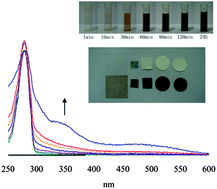
Polym. Chem., 2010,1, 1430-1433
https://doi.org/10.1039/C0PY00215A
Sunlight induced atom transfer radical polymerization by using dimanganese decacarbonyl
The successful sunlight induced ATRP of methyl methacrylate catalyzed by dimanganese decacarbonyl with an alkyl halide–CuIIBr2–PMDETA system is reported.
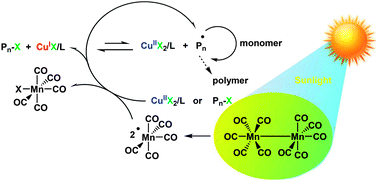
Polym. Chem., 2014,5, 600-606
https://doi.org/10.1039/C3PY01009K
Fabrication of aggregation induced emission dye-based fluorescent organic nanoparticles via emulsion polymerization and their cell imaging applications
Fluorescent organic nanoparticles based on polymerizable aggregation induced emission dye were fabricated through emulsion polymerization and utilized for cell imaging applications.

Polym. Chem., 2014,5, 399-404
https://doi.org/10.1039/C3PY00984J
Pillar[5]arene–neutral guest recognition based supramolecular alternating copolymer containing [c2]daisy chain and bis-pillar[5]arene units
A supramolecular polymer with alternating [c2]daisy-chain dimer and macrocycle host dimer as repeating units is fabricated.
![Graphical abstract: Pillar[5]arene–neutral guest recognition based supramolecular alternating copolymer containing [c2]daisy chain and bis-pillar[5]arene units](/en/Image/Get?imageInfo.ImageType=GA&imageInfo.ImageIdentifier.ManuscriptID=C3PY00462G&imageInfo.ImageIdentifier.Year=2013)
Polym. Chem., 2013,4, 3998-4003
https://doi.org/10.1039/C3PY00462G
A self-healing supramolecular polymer gel with stimuli-responsiveness constructed by crown ether based molecular recognition
A stimuli-responsive and self-healing cross-linked supramolecular polymer network gel is prepared by orthogonal self-assembly of two homoditopic monomers and a metallic cross-linker.
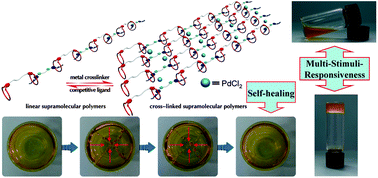
Polym. Chem., 2013,4, 3312-3322
https://doi.org/10.1039/C3PY00283G
A novel pH-responsive supramolecular polymer constructed by pillar[5]arene-based host–guest interactions
A novel pH-responsive supramolecular polymer based on the pillar[5]arene/imidazolium cation recognition motif was successfully prepared.
![Graphical abstract: A novel pH-responsive supramolecular polymer constructed by pillar[5]arene-based host–guest interactions](/en/Image/Get?imageInfo.ImageType=GA&imageInfo.ImageIdentifier.ManuscriptID=C3PY21110J&imageInfo.ImageIdentifier.Year=2013)
Polym. Chem., 2013,4, 2019-2024
https://doi.org/10.1039/C3PY21110J
Visualization of the crucial step in SET-LRP
The crucial step of SET-LRP, disproportionation of CuX and activation of the initiator by nascent Cu(0) particles, was visualized in polar and nonpolar solvents and monomers to elucidate SET-LRP mechanism.

Polym. Chem., 2013,4, 1635-1647
https://doi.org/10.1039/C2PY21084C
Interrupted SET-LRP of methyl acrylate demonstrates Cu(0) colloidal particles as activating species
The immortal nature of the SET-LRP of MA was demonstrated by interrupting and restarting the reaction by removing the Cu(0) wire catalyst using two different experimental methodologies.
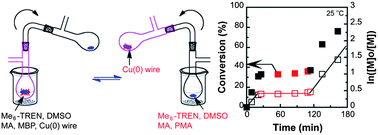
Polym. Chem., 2013,4, 686-694
https://doi.org/10.1039/C2PY20791E
A comparative study of the SET-LRP of oligo(ethylene oxide) methyl ether acrylate in DMSO and in H2O
In SET-LRP of OEOMEA, activated Cu(0) wire and Cu(0) nanoparticles resulted in a higher polymerization rate in water than in DMSO.
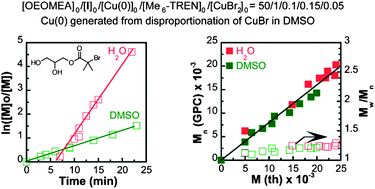
Polym. Chem., 2013,4, 144-155
https://doi.org/10.1039/C2PY20782F
Synthesis of multi-block copolymer stars using a simple iterative Cu(0)-mediated radical polymerization technique
A new iterative copper(0)-mediated radical polymerization approach is presented that represents a significant advance in the synthesis of high order multi-block star copolymers. The synthesis of these materials can now be achieved in high yield and with controlled structural complexity, with purification only required at the last step. The approach is general, facile and offers the opportunity to synthesize new copolymer stars.
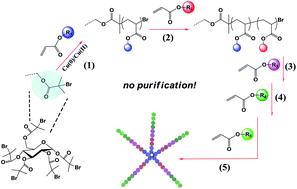
Polym. Chem., 2012,3, 117-123
https://doi.org/10.1039/C1PY00384D
One-step preparation of reduction-responsive poly(ethylene glycol)-poly(amino acid)s nanogels as efficient intracellular drug delivery platforms
A series of disulfide-core-cross-linked poly(ethylene glycol)-poly(amino acid)s nanogels were prepared through one-step ring-opening polymerization of N-carboxyanhydride monomers and used as efficient intracellular drug delivery carriers.
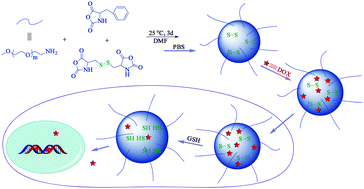
Polym. Chem., 2011,2, 2857-2864
https://doi.org/10.1039/C1PY00360G
Synthesis and properties of anion conductive ionomers containing fluorenyl groups for alkaline fuel cell applications
Poly(arylene ether)s containing quaternized ammonio-substituted fluorenyl groups were synthesized and evaluated as anion exchange membranes for alkaline fuel cell applications.
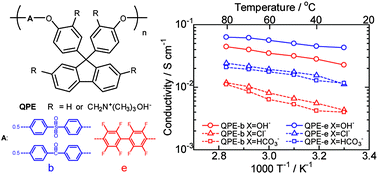
Polym. Chem., 2011,2, 99-106
https://doi.org/10.1039/C0PY00238K
About this collection
Polymer Chemistry is five years old this year and, looking back, we are delighted with the progress and impact that the Journal has made in this time. Despite being relatively young, Polymer Chemistry has established itself as one of the leading journals in polymer science. This success is owed to you, the polymer community, and the support you have given us through submitting and reviewing manuscripts, ensuring that we publish the highest quality papers. In celebration of Polymer Chemistry’s 5th birthday, we are publishing this web themed collection to showcase some of the top work we’ve published from the polymer chemistry community over the last 5 years.